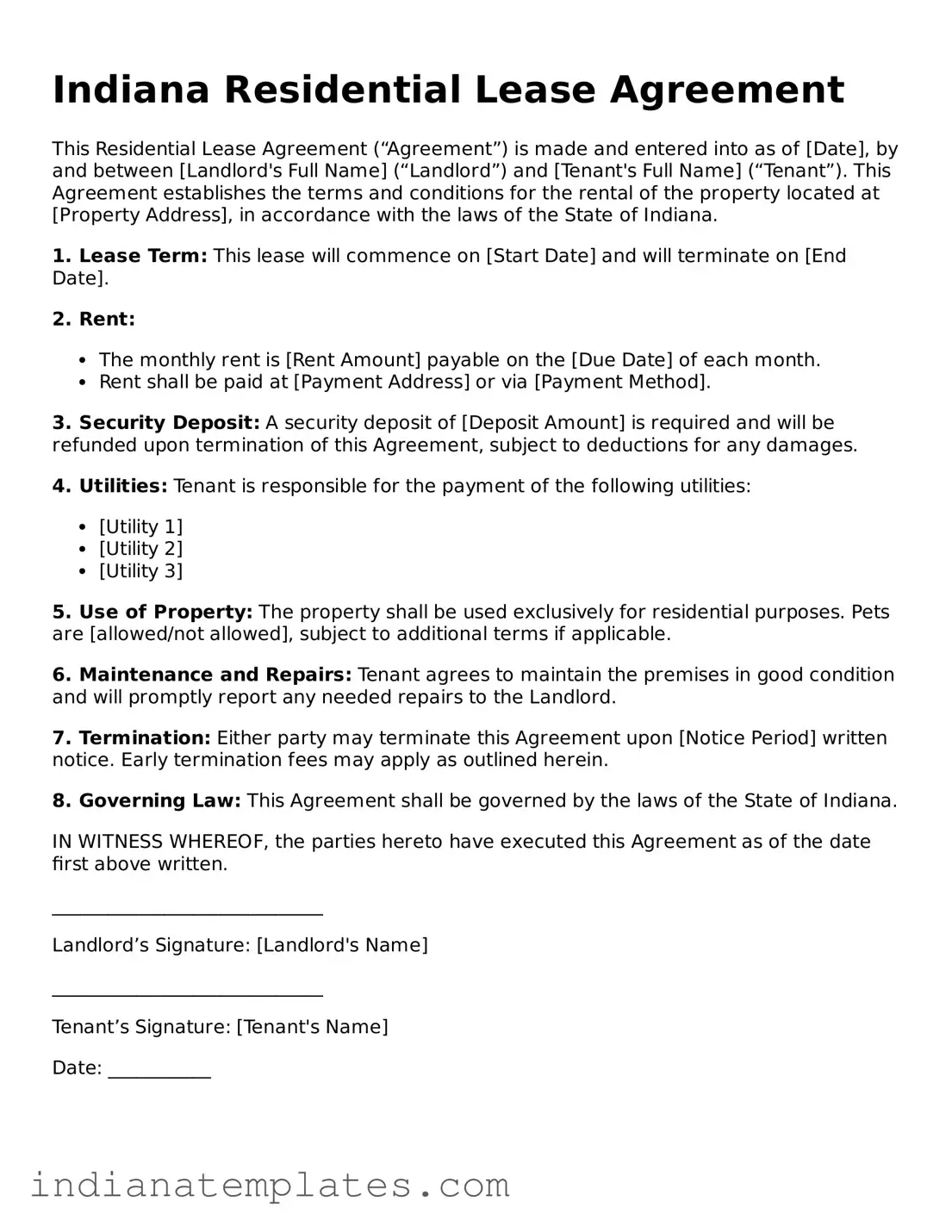What is an Indiana Residential Lease Agreement?
The Indiana Residential Lease Agreement is a legally binding contract between a landlord and a tenant. This document outlines the terms and conditions under which a tenant will rent a residential property. It covers important details such as the rental amount, payment due dates, lease duration, and responsibilities of both parties.
What key elements should be included in the agreement?
A well-drafted Indiana Residential Lease Agreement typically includes the names of the landlord and tenant, the property address, the lease term, the rental amount, security deposit details, maintenance responsibilities, and rules regarding pets or smoking. It should also specify the process for handling disputes and any other terms relevant to the rental arrangement.
How long is a typical lease term in Indiana?
Lease terms in Indiana can vary widely. They often range from one year to month-to-month arrangements. A longer lease may provide stability for both the tenant and landlord, while a month-to-month lease offers flexibility. It's essential for both parties to agree on the duration before signing.
Can a landlord increase the rent during a lease term?
In general, landlords cannot increase the rent during the term of a fixed lease unless the lease agreement specifically allows for it. For month-to-month leases, landlords can typically raise the rent, but they must provide proper notice to the tenant, usually 30 days in advance.
What is a security deposit, and how is it handled?
A security deposit is a sum of money collected by the landlord to cover potential damages or unpaid rent. In Indiana, the maximum security deposit is usually equivalent to one month's rent. The landlord must return the deposit within 45 days after the lease ends, minus any deductions for damages or unpaid rent, which should be itemized in writing.
What happens if either party wants to terminate the lease early?
If either the landlord or tenant wishes to terminate the lease early, they must refer to the lease agreement for specific terms. Many leases include clauses outlining the process for early termination, which may involve giving notice or paying a fee. It's crucial to follow these terms to avoid legal complications.
Are there specific laws governing residential leases in Indiana?
Yes, Indiana has specific laws that govern residential leases. These laws cover various aspects, including security deposits, eviction procedures, and tenant rights. Familiarizing yourself with these regulations can help both landlords and tenants understand their rights and responsibilities.
What should a tenant do if they have a dispute with their landlord?
If a tenant encounters a dispute with their landlord, it’s advisable to first try to resolve the issue through direct communication. If that fails, they may seek mediation or legal advice. Understanding the terms of the lease agreement and Indiana's landlord-tenant laws can provide a solid foundation for resolving disputes effectively.
